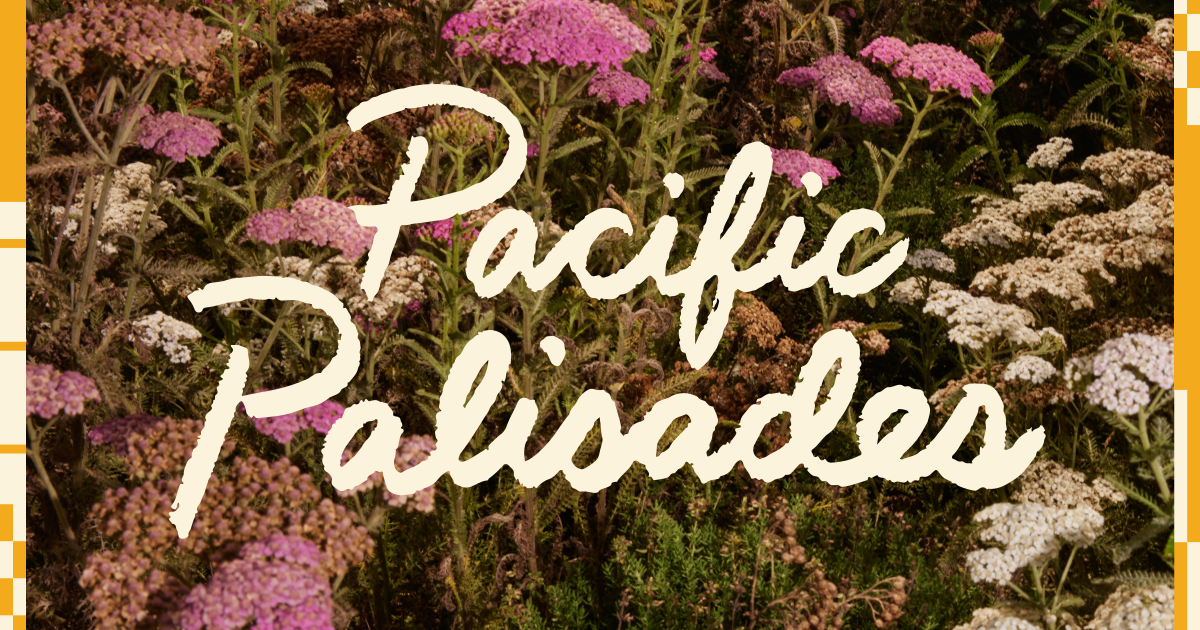Years ago, when I was in my late 20s, I had lunch with a friend of a friend who had just moved to Pacific Palisades. I was living in a duplex in Echo Park at the time and expressed surprise that someone my age lived in a part of Los Angeles that felt so out of reach.
“Oh honey, you’ll see,” she said airily. “You’ll get pregnant and move to the Palisades too.”
I was stunned. “Oh honey,” I thought. “If only that’s how the world worked for all of us.”

Get to know Los Angeles through the places that bring it to life. From restaurants to shops to outdoor spaces, here’s what to discover now.
I’m not saying everyone would move to Pacific Palisades if they could afford it (and with an average home price of more than $3.5 million, according to Zillow, very few can afford it), but spend some time in this Norman Rockwell-esque town by the sea and you will surely understand its appeal — and maybe even its price tag.
More suburban than Santa Monica to its south and more cohesive than Topanga to the north, Pacific Palisades offers its mostly well-heeled residents easy access to the sage-scented Santa Monica Mountains and world-class beaches, all while maintaining a small-town feel. The community hosts a Fourth of July parade each year, complete with marching bands and a patriotic pups contest. On warm August nights, up to 1,000 people gather at the rec center for an outdoor movie and free hot dogs. Many homes have white picket fences. Nobody goes to the local Erewhon without running into someone they know.
But you don’t have to live in the Palisades to enjoy its distinctive charms. Visitors can soak up the manicured luxury of Rick Caruso’s Palisades Village with its curved brick paths, flickering lampposts and the cleanest, most spacious public bathrooms I’ve ever seen. Will Rogers State Park and Temescal Gateway Park provide access to some of Southern California’s most spectacular hikes and vistas as well as beautiful picnic areas.
You can meditate in the gardens of the Self Realization Fellowship’s Lake Shrine, or visit the Eames House, a beloved temple of Midcentury Modern style. The Getty Villa and its stunning gardens are just a few minutes from town, and Will Rogers State Beach is a great choice for families, or anyone who values easy parking and mild surf.
Once the home of the Gabrielino-Tongva people, the area known as Pacific Palisades was colonized by the Spanish in the mid-1800s and marketed by wealthy developers as a resort town in the 1880s. Collis Huntington (uncle of Henry) built what was then the world’s longest wharf in 1894 in the hopes that the area might be designated the Port of L.A. That didn’t pan out, but a Japanese fishing village sprung up along the coast and in 1911, visionary filmmaker Thomas Ince established one of the earliest movie studios where Sunset Boulevard intersects with Pacific Coast Highway. By 1920, however, nearly all evidence of the studio had been erased by fire and the fishing village was condemned as unsanitary.
Pacific Palisades’ modern era began in 1922, after Rev. Charles Scott, a Methodist minister, bought 1,068 acres on both sides of Temescal Canyon as a permanent home for a local Chautauqua — a seasonal camp that was popular with Protestant families in the late 19th and early 20th centuries. A contingent from the Methodist regional headquarters came to inspect the land. One members reportedly declared, “This is truly the Pacific Palisades.” The name stuck.
Soon wealthier folks including movie stars like Will Rogers discovered the Palisades’ rugged beauty and began building more luxurious homes in the hills and canyons surrounding the middle-class town. In the 1940s, the community became a magnet for European intellectuals forced to flee the Nazis, including Thomas Mann, Bertolt Brecht and Lion Feuchtwanger, whose home, the Villa Aurora, served as a social hub for the group and can still be toured today. The Palisades grew in reputation and price over the decades, drawing famous residents like Ronald and Nancy Reagan, Mark Hamill, Billy Crystal, Brooke Shields and Adam Sandler.
Despite the proximity to wealth and celebrity, most Palisades residents will tell you that it’s the sense of community and access to the outdoors that they cherish most about their neighborhood. A T-shirt that was popular in local stores in the 1980s sums up this particular brand of town pride. It reads: “If you’re rich, you live in Beverly Hills. If you’re famous, you live in Malibu. If you’re lucky, you live in Pacific Palisades.”
We may not all be lucky enough to live in the Palisades, but we can certainly visit. Here’s where to start.
What’s included in this guide
Anyone who’s lived in a major metropolis can tell you that neighborhoods are a tricky thing. They’re eternally malleable and evoke sociological questions around how we place our homes, our neighbors and our communities within a wider tapestry. In the name of neighborly generosity, we included gems that may linger outside of technical parameters. Instead of leaning into stark definitions, we hope to celebrate all of the places that make us love where we live.

